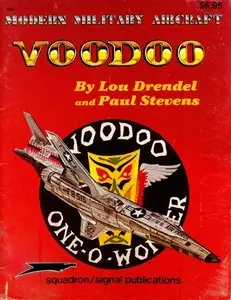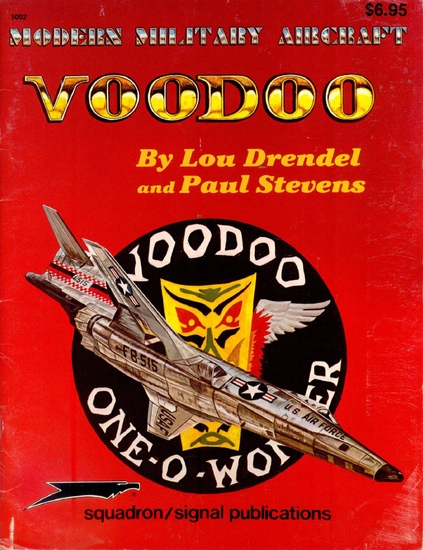F-101 Voodoo (Military Aircraft 5002) By P. Stevens, Lou Drendel
Publisher: Squadron/Signal Publications 1985 | 64 Pages | ISBN: 0897471628 | PDF | 18 MB
Publisher: Squadron/Signal Publications 1985 | 64 Pages | ISBN: 0897471628 | PDF | 18 MB
When The Strategic Air Command (SAC) was formed on 21 March 1946, it included one group of P-51 Mustangs. The Mustang was the first really successful long range bomber escort, and World War II had proven the necessity of providing bombers with fighter protection. The postwar Air Force was about to leap into the jet age, and it was obvious to SAC Commander General George C Kenney that SAC would need a long range jet fighter to escort the B-47 Stratojet which was soon to become operational. Since existing jet fighters were of limited range, experimental development contracts were awarded to McDonnell (XF-88) and Lockheed (XF-90) in June of 1946 to develop a heavy long range 'Penetration* fighter. Neither experimental fighter had flown by mid-1948, when President Harry S Truman and his Secretary of Defense, James V Forrestal endorsed plans that placed heavy emphasis on SAC Atomic Bombing capability as a deterrent force. On 20 October 1948, six months behind schedule, the initial XF-88 prototype (46-525) was rolled out. Powered by a pair of 3,0001b thrust Westinghouse J-34-WE-13 turbojet engines, it was flown for the first time nine days later. Maximum speed was 641 mph. The'six month delay had been caused by a complete redesign of the wing, providing the XF-88 with a thirty-five degree swept wing instead of the straight wing of the original design proposal, and changes in the air intakes. On 16 December 1948 McDonnell was advised to cease XF-88 development, and prepare a detailed accounting of funds expended. USAF cancellation of contracts for 239 airplanes, worth 300 million dollars followed shortly. The Air Force had decided to spend its increasingly meager postwar budget making modifications to their fleet of operational Convair B-36s and Boeing B-50s, and to purchase additional B-36s. Fiscal Year 1950 (FY 50) money which had been allocated for F-88 production was used to buy North American F-86D Sabre all weather interceptors, which would 'defend America from Russian bombers'. The appearance of Russian MiG-15 jet fighters over Korea during the fall of 1950 led to a reevaluation of the SAC fighter escort equation. SAC B-29s — one of the Atomic bombers which were supposed to deter the Soviets — proved to be virtually defenseless against the MiG-15 and were being shot down left and right over North Korea by the new Soviet jet fighter. And it was just as obvious that F-80 Shooting Stars and F-84 Thunderjets couldn't stand up against the MiG. SAC efforts to develop a parasite fighter (McDonnell XF-85 Goblin), or to try to drag along a fighter escort via wingtip-to-wingtip hookups had proven impractical. Clearly, SAC needed a long range supersonic bomber escort. The F-88 program was hurriedly reinstated.



